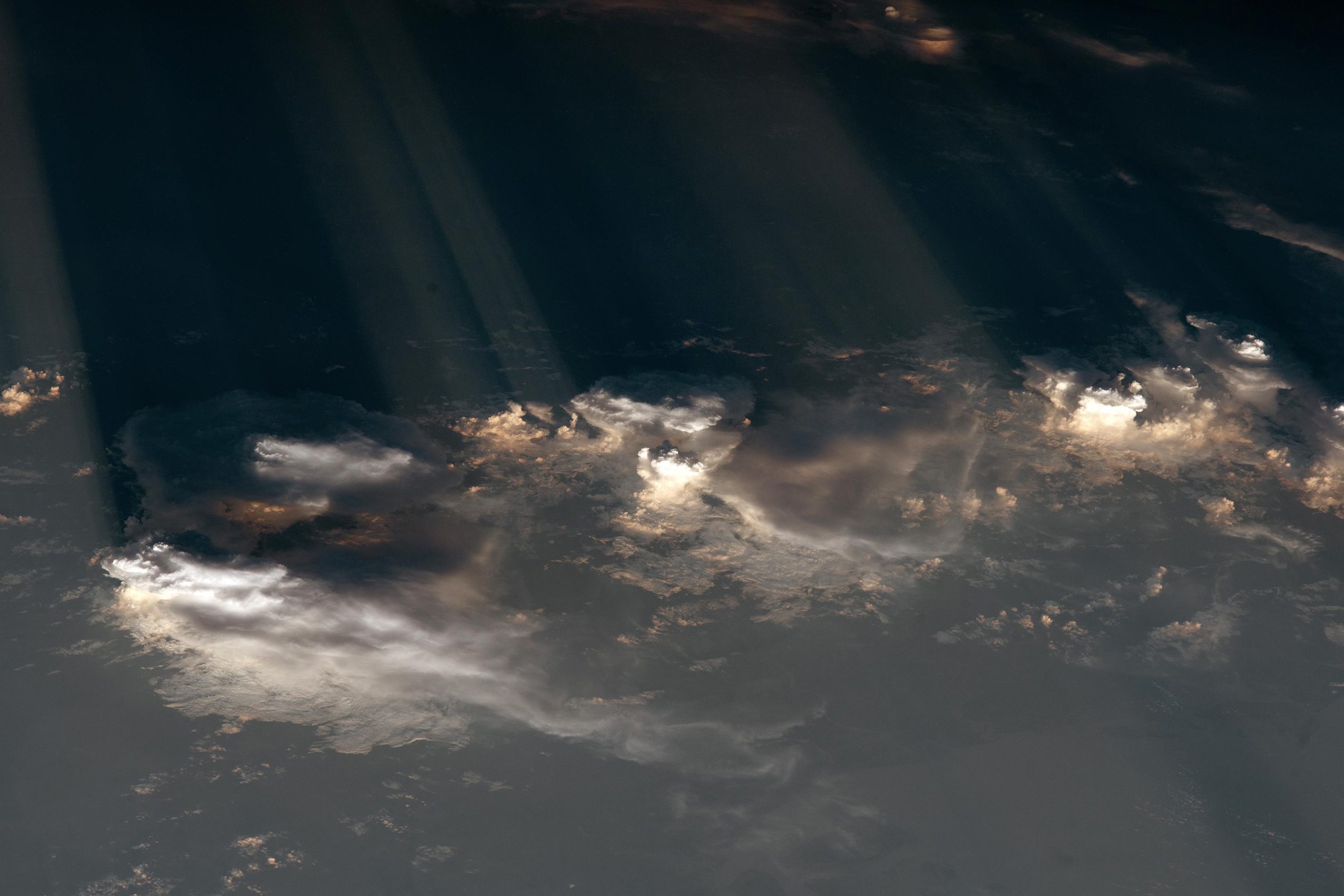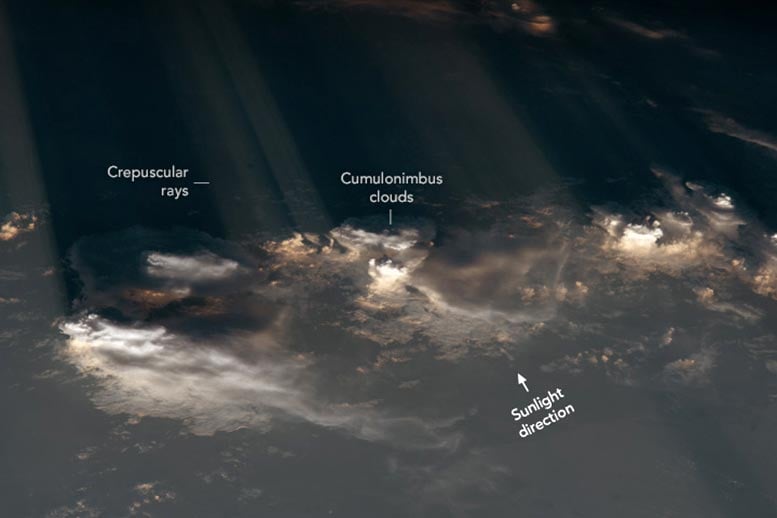

An astronaut’s photo from the International Space Station captures crepuscular rays and cumulonimbus clouds, revealing a stunning contrast of light and shadow. The unique vantage from space showcases the vast reach of the rays, an effect heightened by atmospheric scattering.
An astronaut on the International Space Station (ISS) captured this angled photograph of crepuscular rays while orbiting over southern Asia. The off-nadir perspective, combined with the low angle of the Sun, brings out the varied cloud formations and the warm tones of the setting Sun.
Understanding Crepuscular Rays and Their Origins
Crepuscular rays—named after the Latin word for “twilight”—are beams of sunlight that can appear at any time but are most visible around sunrise or sunset. In this photograph, gaps in the clouds let sunlight shine through, partially lighting areas otherwise cast in shadow by tall clouds. Water vapor and aerosol particles in the atmosphere scatter the light, making these bright crepuscular rays stand out.
Observing Crepuscular Rays From Space vs. Earth
These rays are known by a variety of names, including sunbeams and antisolar rays. The optical effect is often visible from the ground. However, the high-altitude perspective from the space station is distinctive because astronauts can capture a greater field of view, showing the truly vast distances spanned by the sunbeams. Crepuscular rays can also occur at night when clouds or other high-altitude features block incoming moonlight.
Formation and Characteristics of Cumulonimbus Clouds
The clouds visible in the photo are cumulonimbus clouds formed by updrafts of warm, moist air. Cumulonimbus clouds are also called thunderclouds because they are often associated with extreme weather, such as lightning, hail, and tornadoes. The flat upper surface of mature cumulonimbus clouds, which resembles an anvil, is caused by strong winds that prevent clouds from growing upward past the tropopause—the layer of the atmosphere that forms a boundary between the troposphere below and stratosphere above.
Astronaut photograph ISS069-E-88621 was acquired on September 16, 2023, with a Nikon D5 digital camera using a focal length of 105 millimeters. It is provided by the ISS Crew Earth Observations Facility and the Earth Science and Remote Sensing Unit, Johnson Space Center. The image was taken by a member of the Expedition 69 crew. The image has been cropped and enhanced to improve contrast, and lens artifacts have been removed. The International Space Station Program supports the laboratory as part of the ISS National Lab to help astronauts take pictures of Earth that will be of the greatest value to scientists and the public, and to make those images freely available on the Internet.